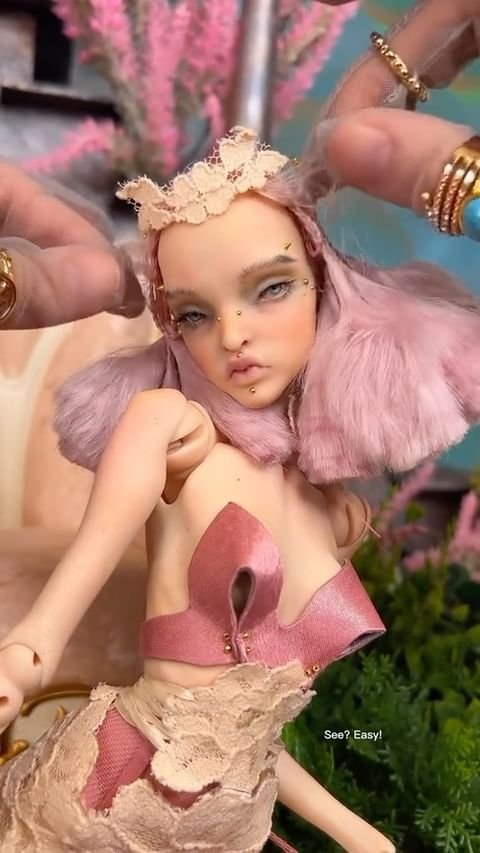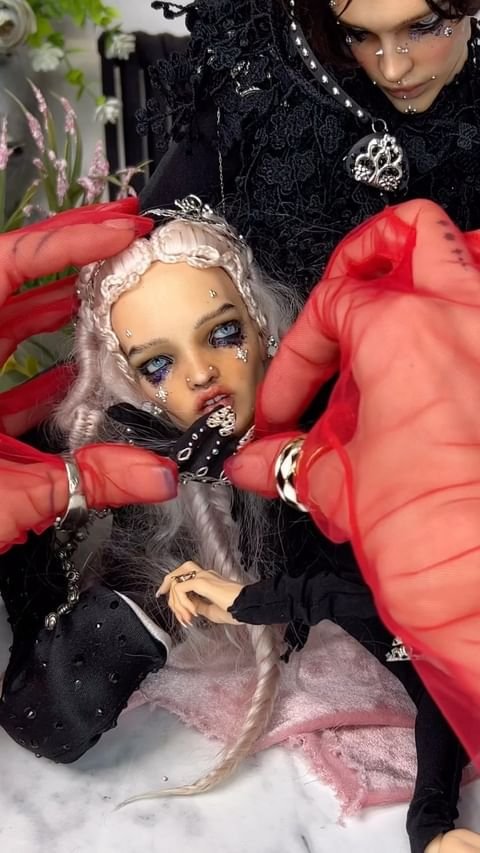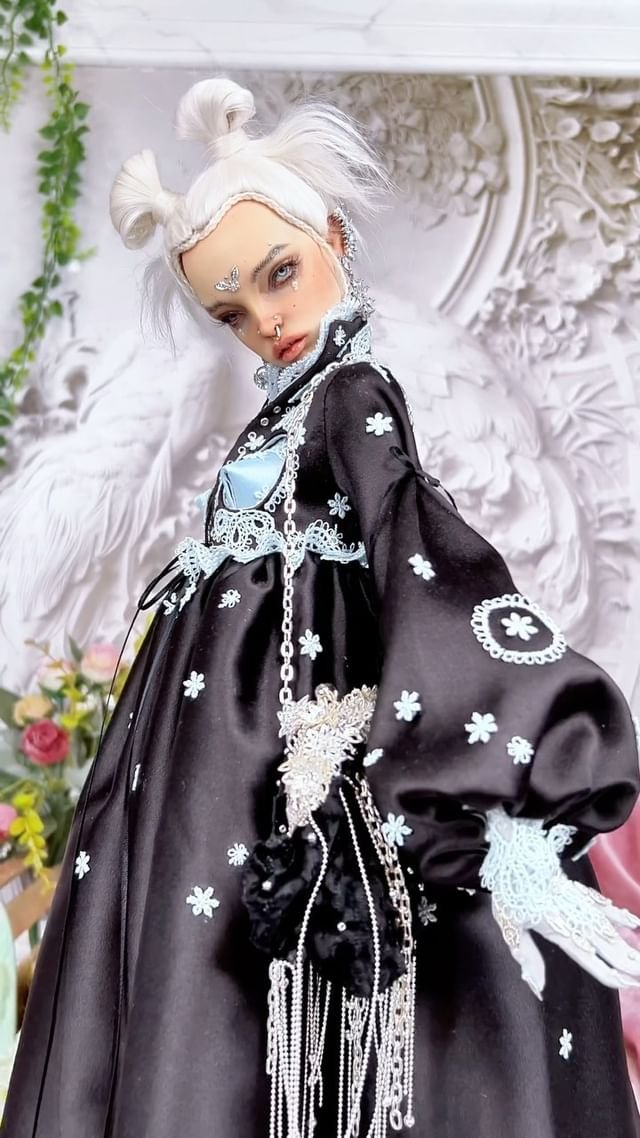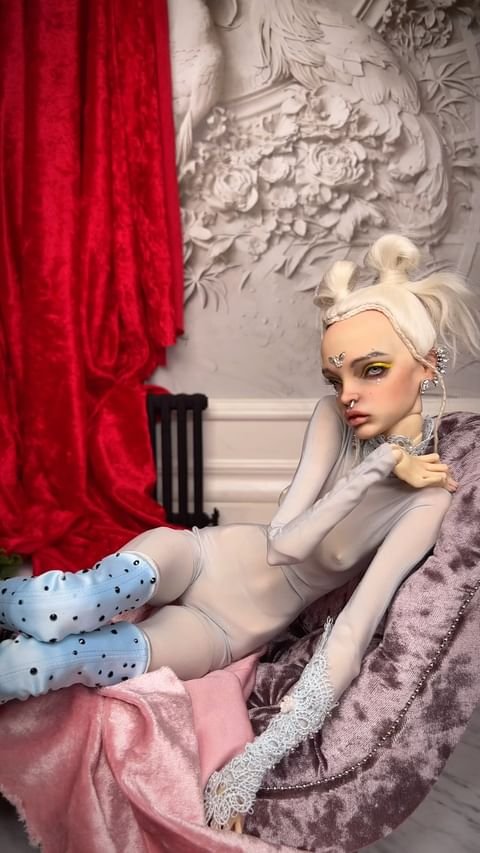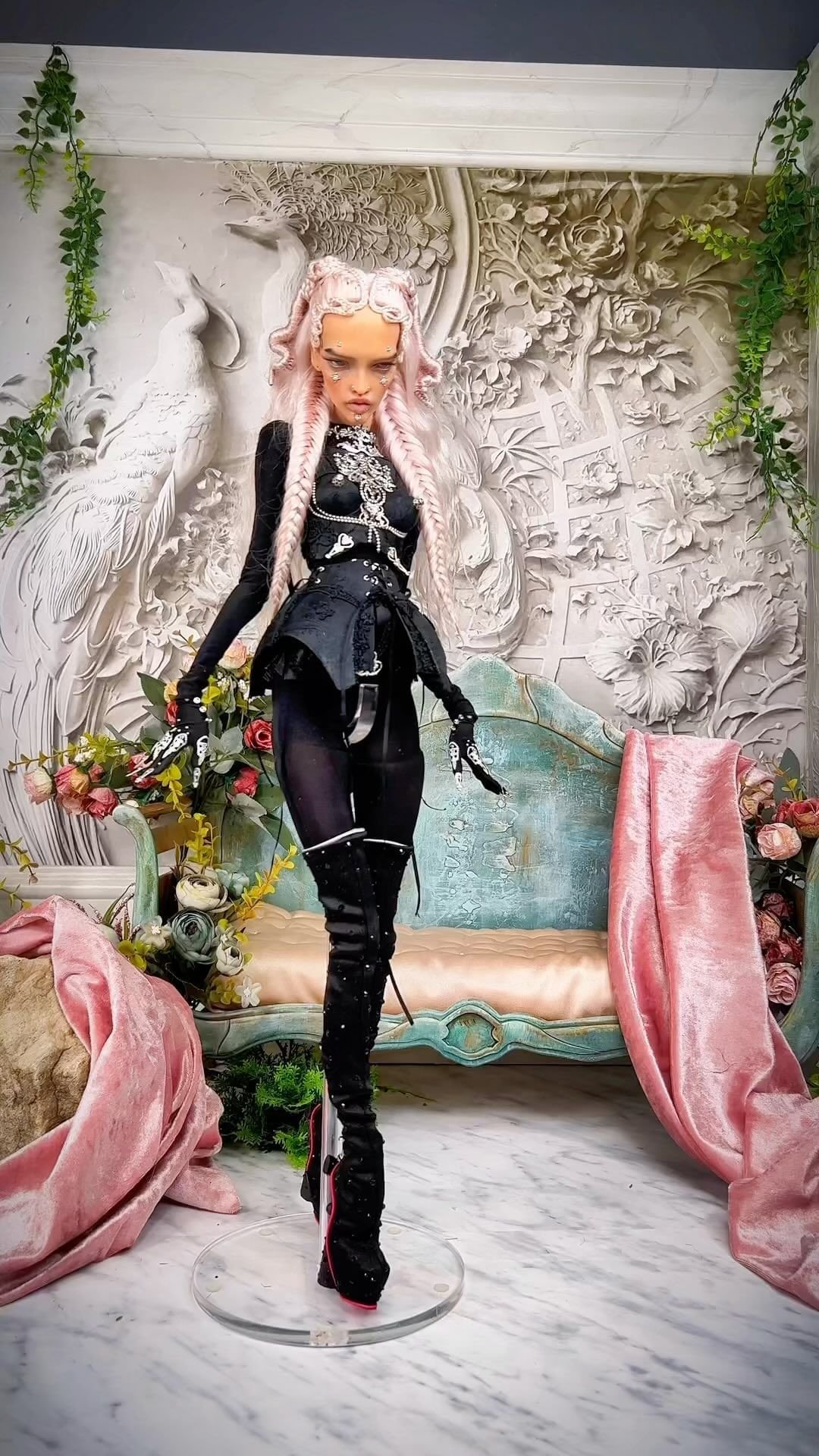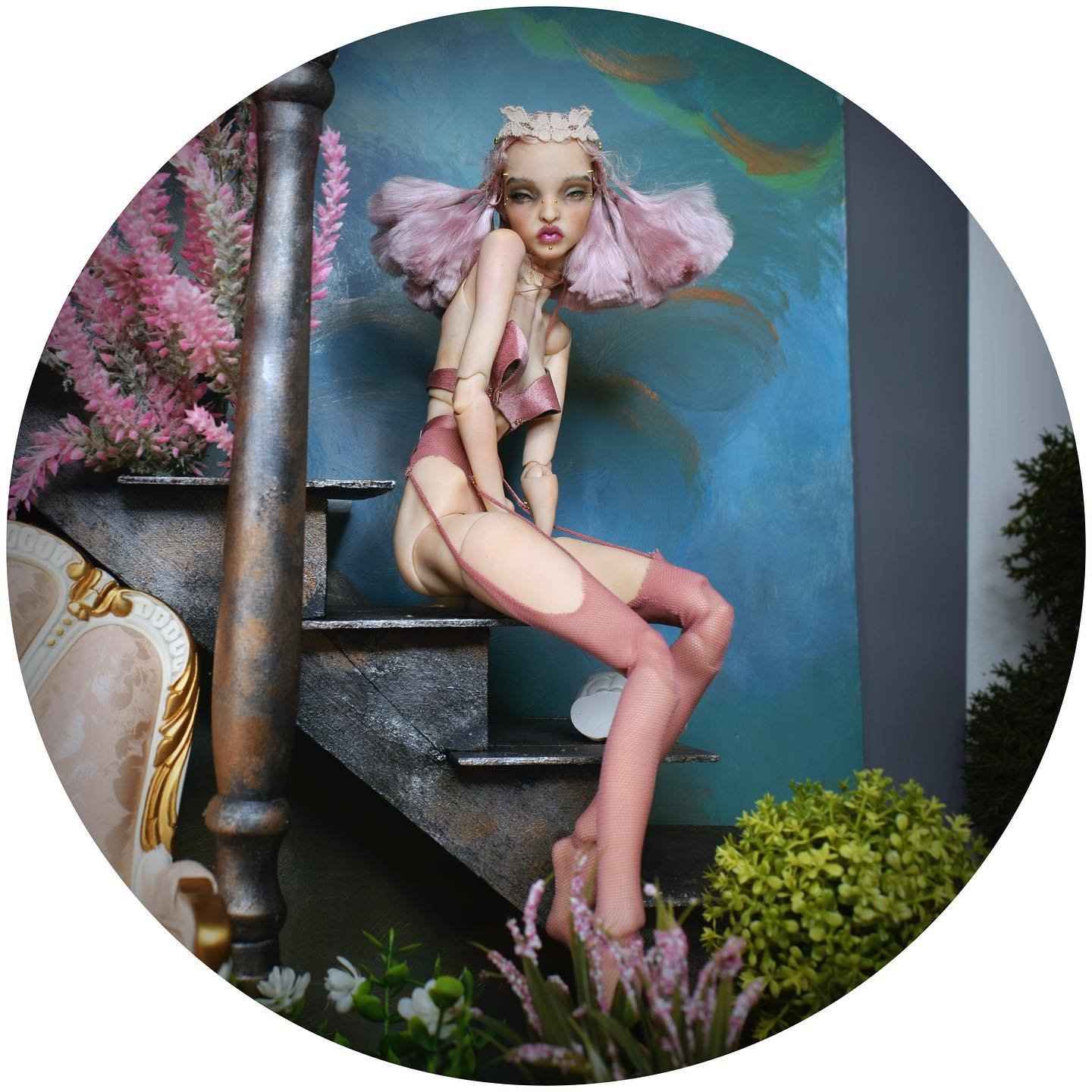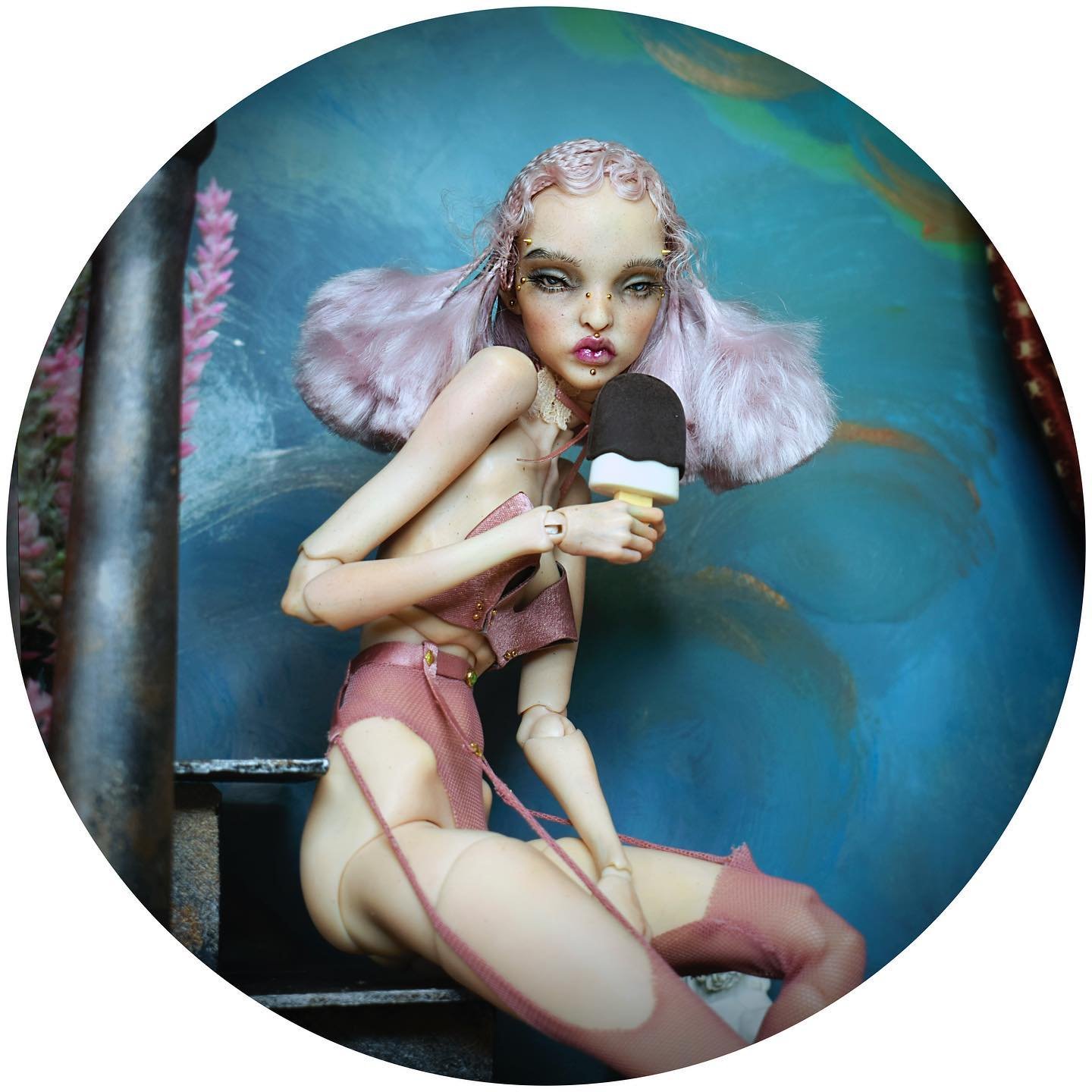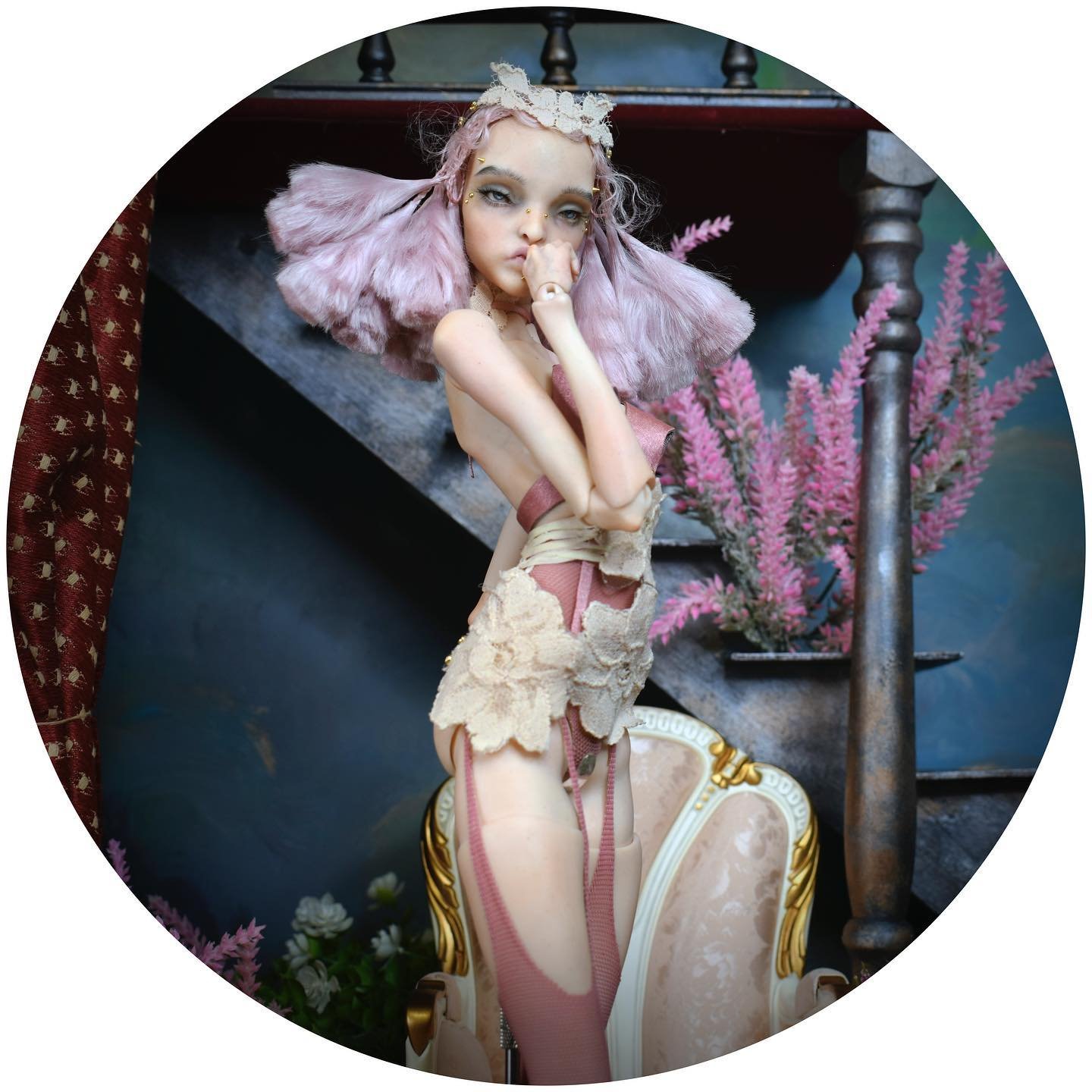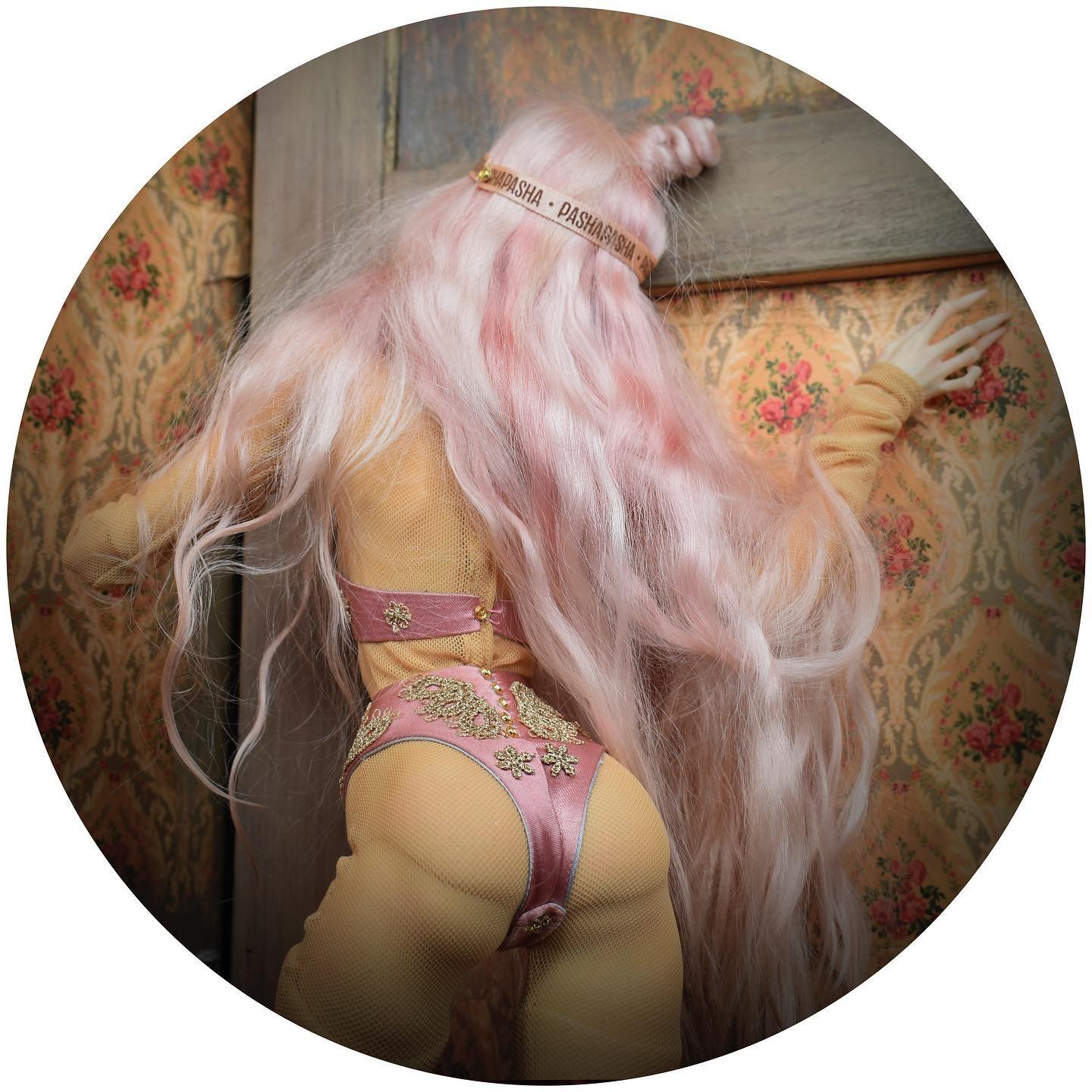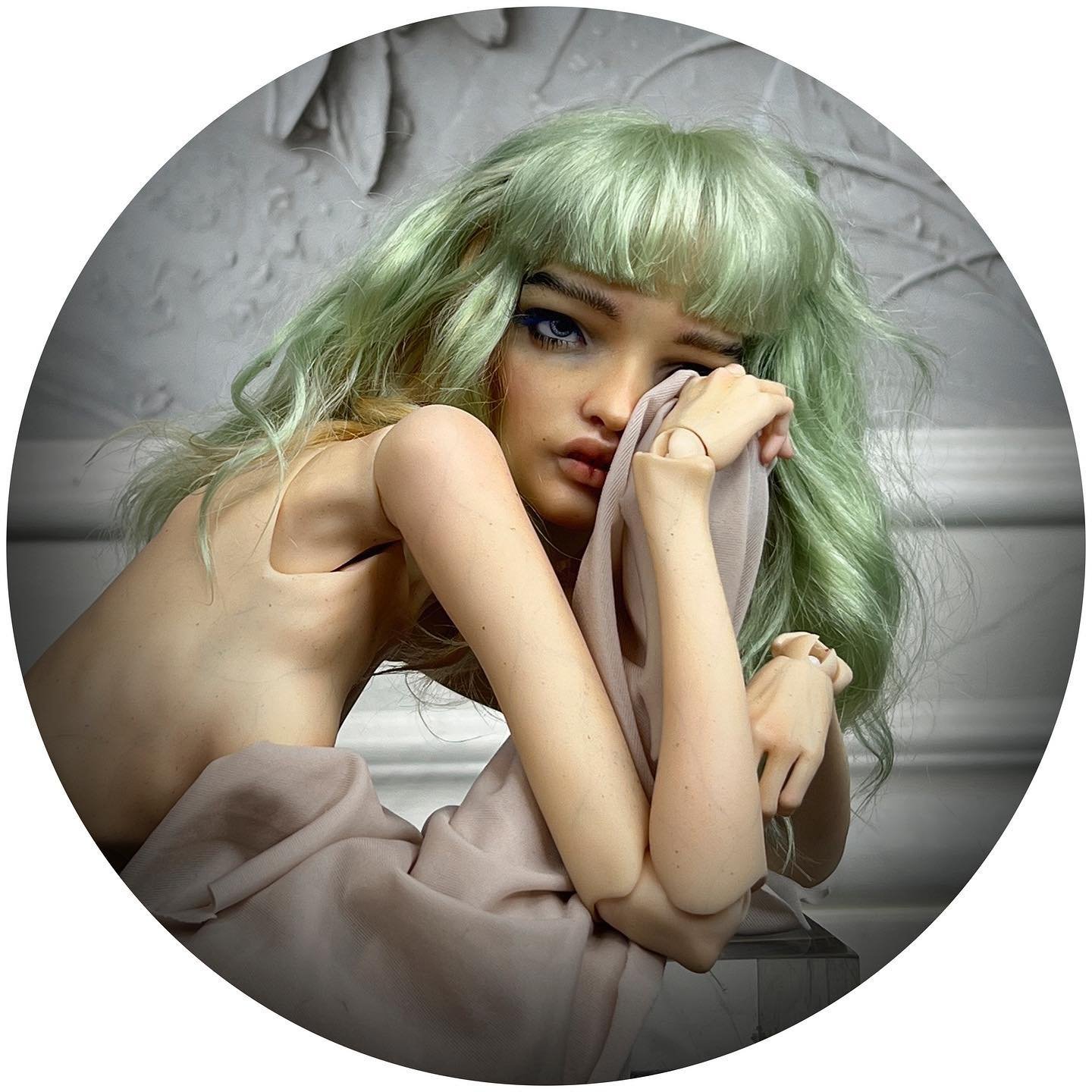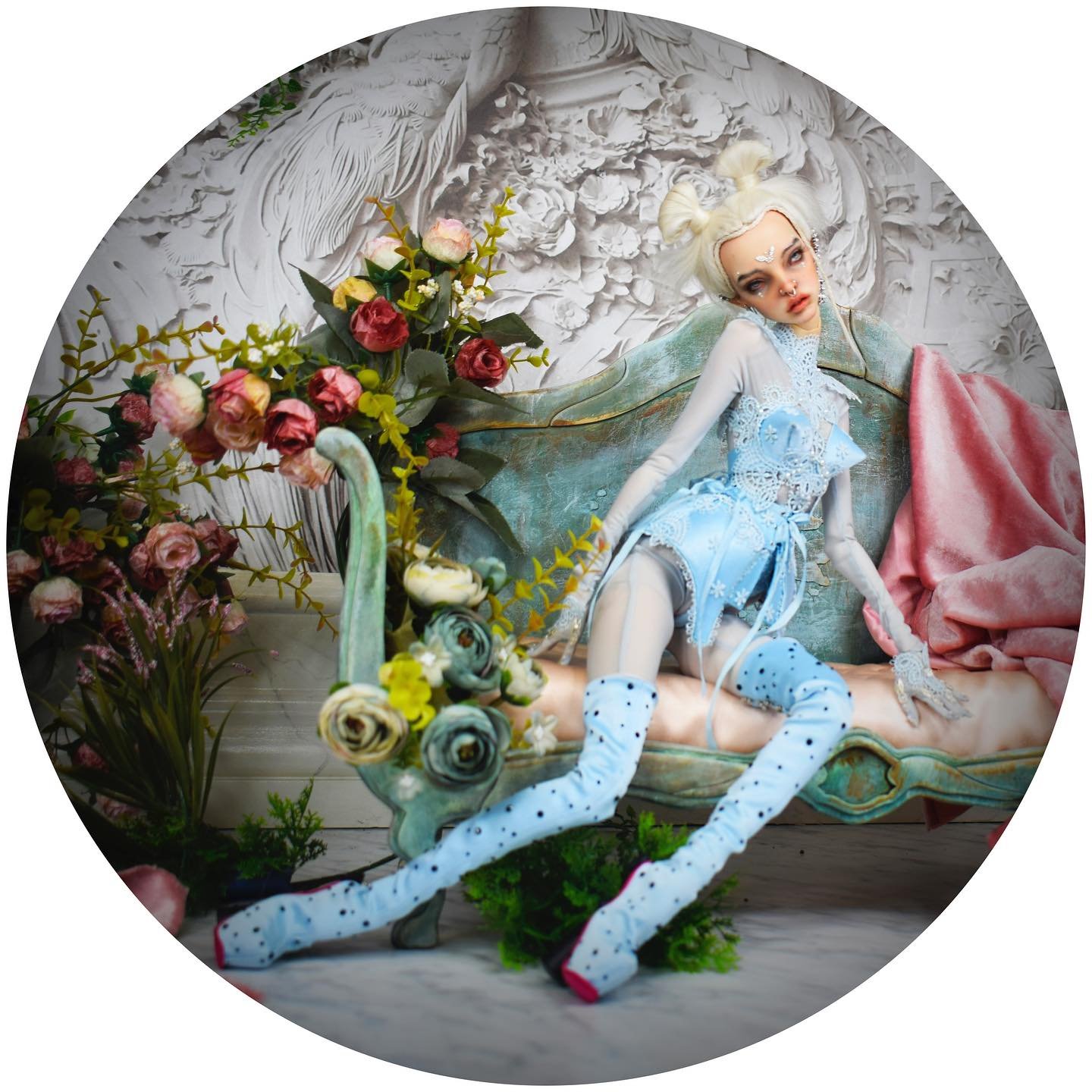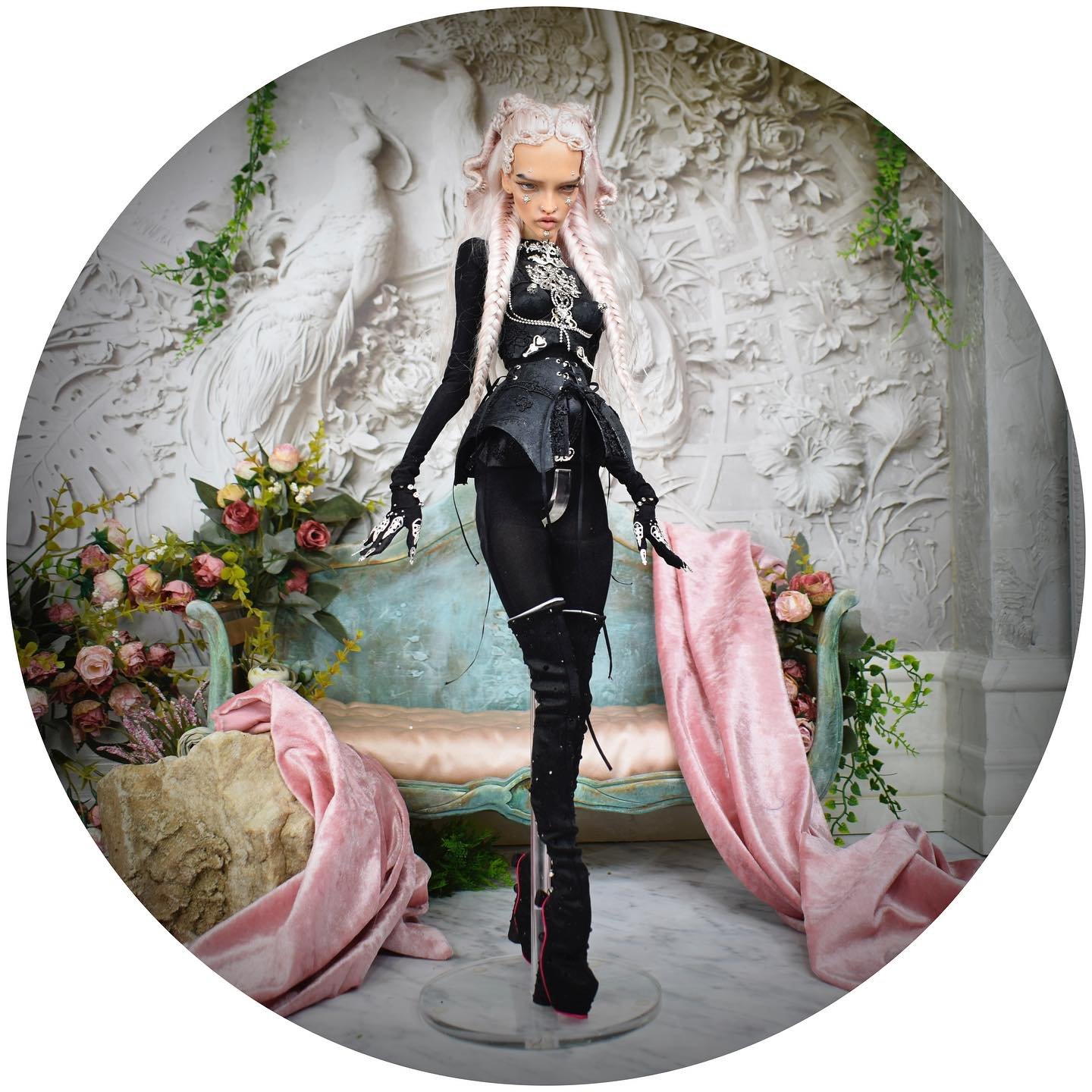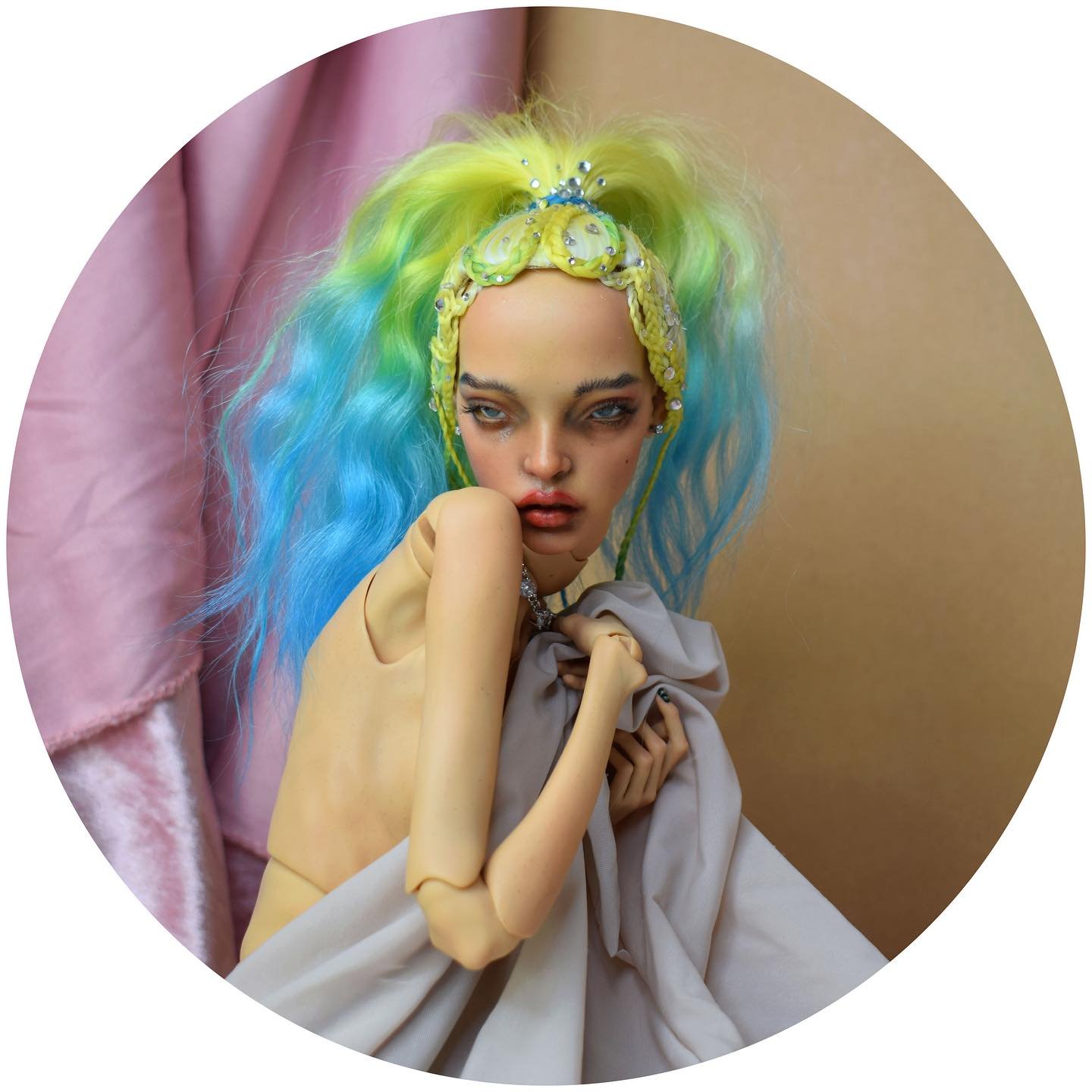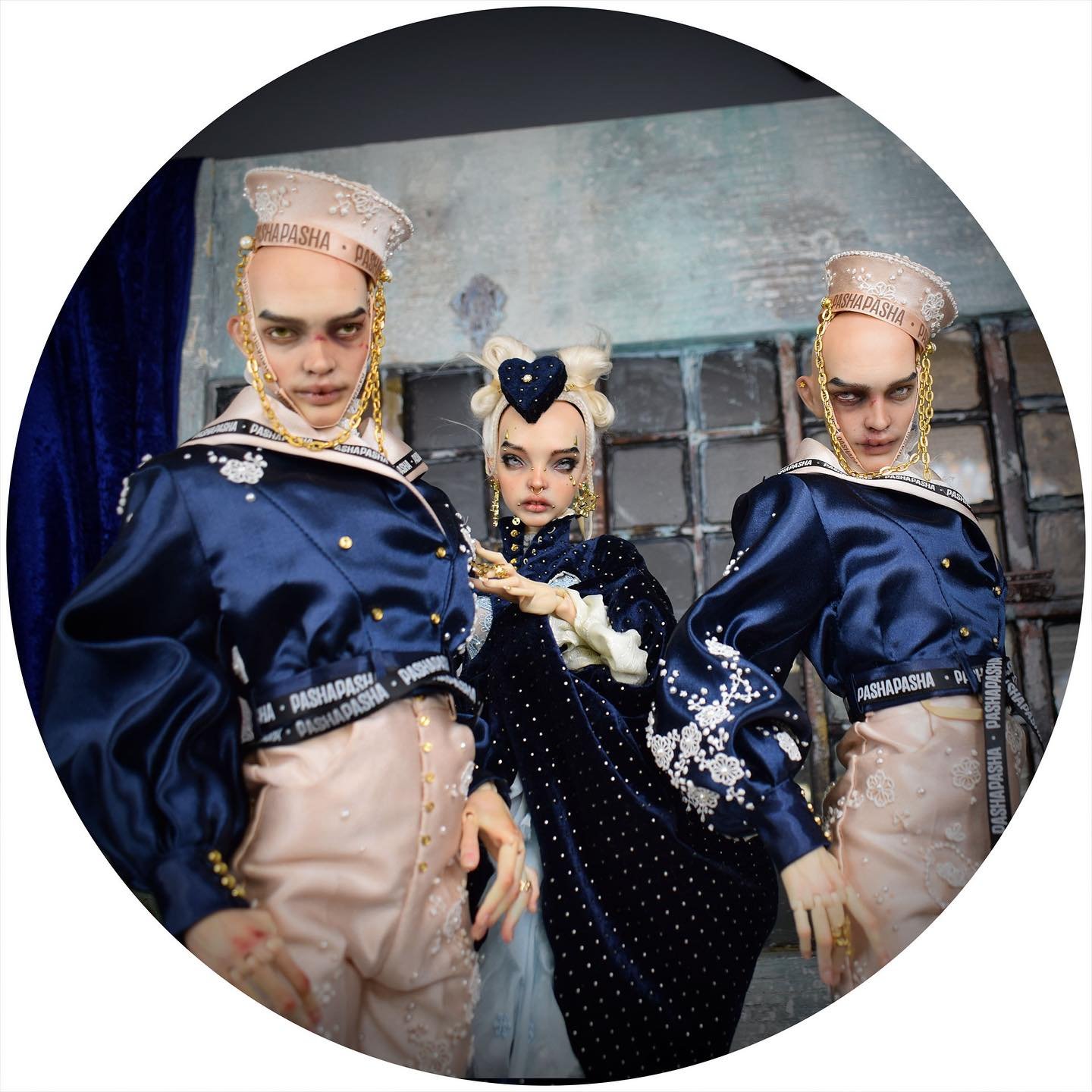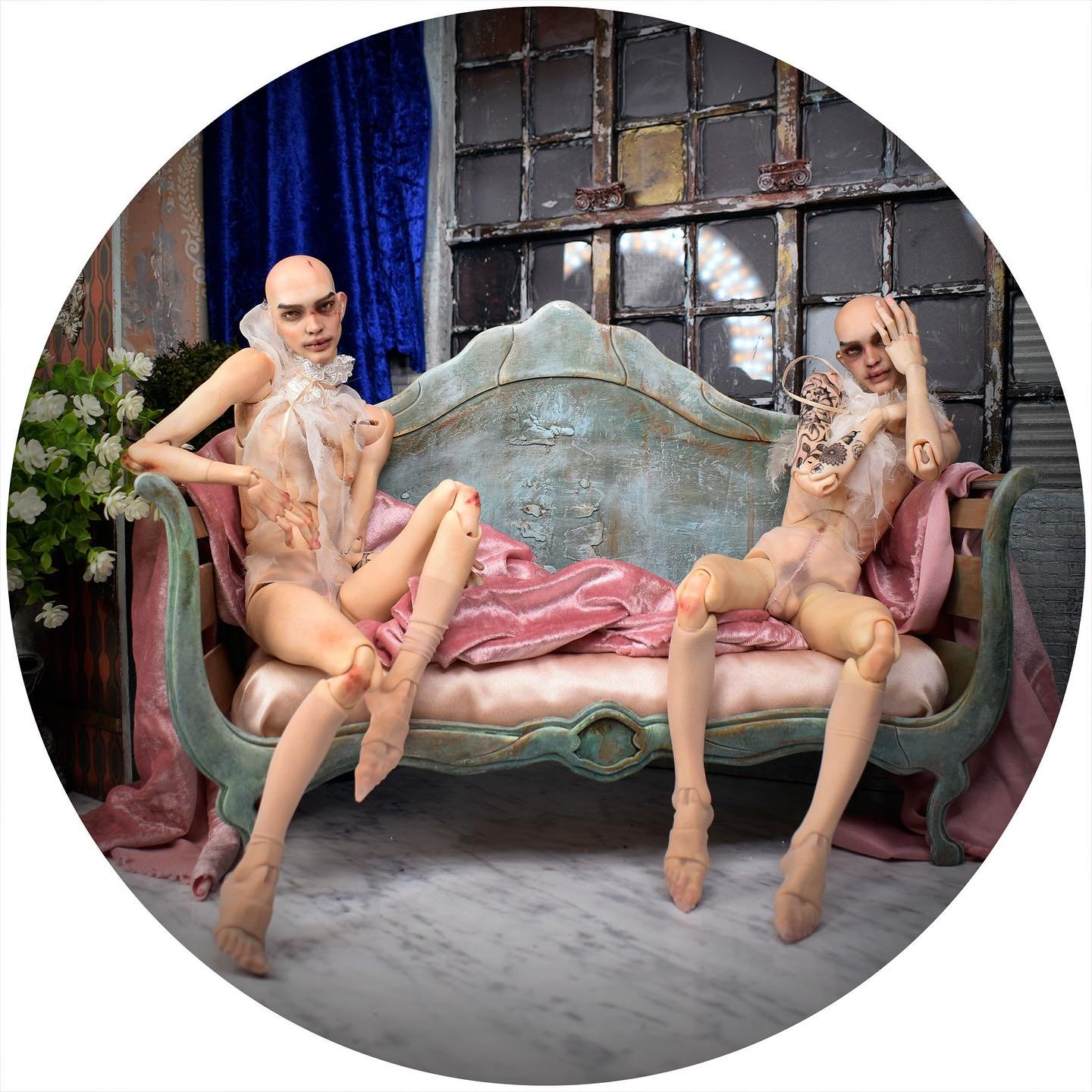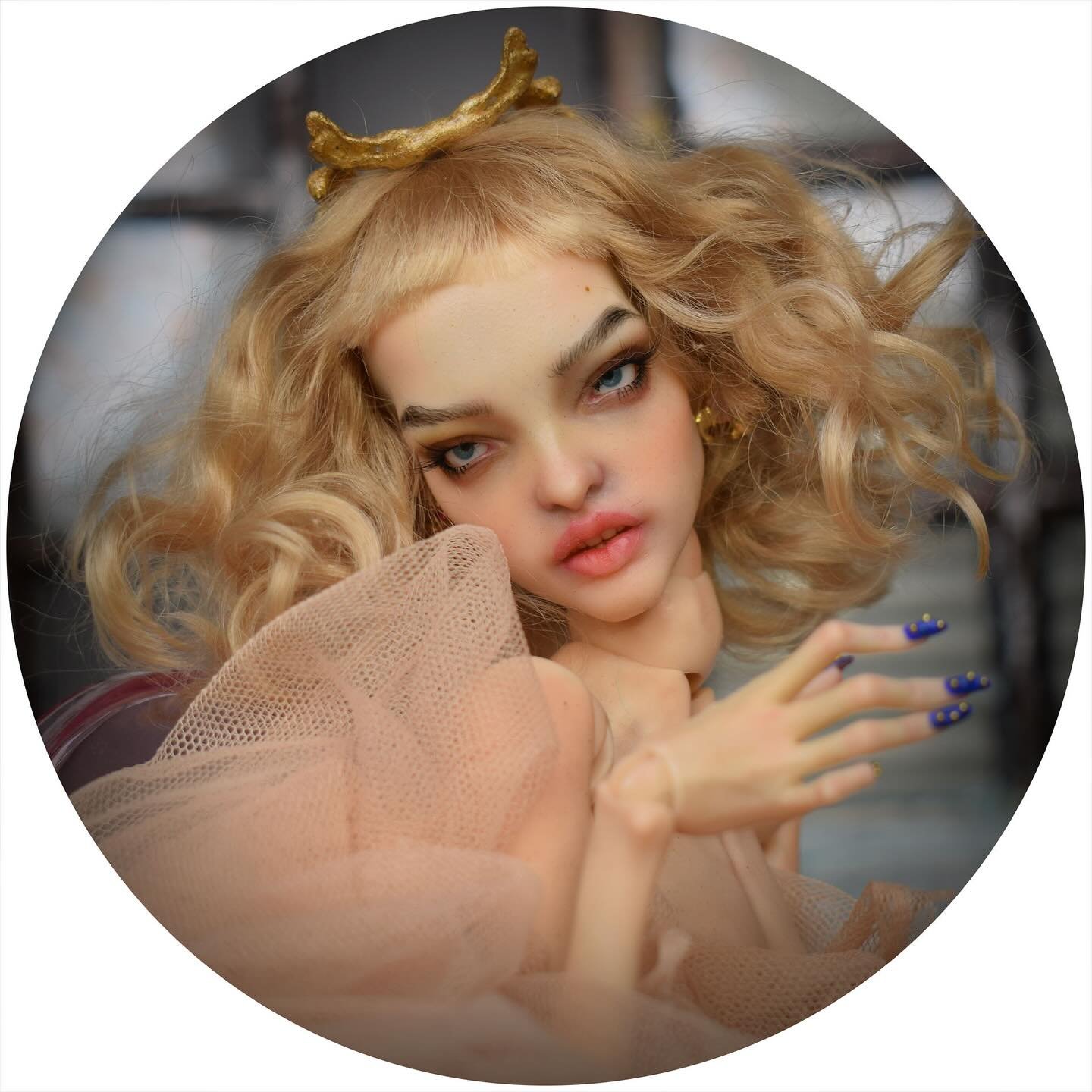PASHA PASHA EXCLUSIVE INTERVIEW
“I crafted the PashaPasha doll, giving her the name I bear twice as a symbolic reminder of my dual nature. To me, she represents a mirror world – not reality, but an alternate version of myself, a manifestation of my thoughts on another plane.”
As a sculptor specializing in articulated dolls, you bring a unique blend of experiences to breathe life into your dark and whimsical characters. Could you share the origins of your journey in this particular artistic medium?
I encountered a breathtaking doll standing naked on a rock, braiding her full green hair. It felt like a convergence of all my dreams into a single piece of art. However, the price tag proved to be too exorbitant at the time, leaving me with a sense of disappointment but also a deep desire to improve my skills. Determined to possess a similar creation, I decided to embark on the journey of crafting my own dolls.
Despite the unconventional start, I enrolled in a random doll-making class—initially designed for housewives and older individuals. It was in this seemingly unlikely setting that I created my first doll. To my surprise, the piece garnered attention and earned an invitation to exhibit at an art showcase. The success continued as the doll sold on the first day, marking the beginning of my enduring passion for creating these expressive and captivating characters.
Your exploration of mental health as a driving force behind your artistic journey is intriguing. Could you delve deeper into how art and creative expression have played a role in your healing process?
When I began my creative endeavors, my mental health was in a fragile state, and I found solace in keeping myself occupied – a continuous engagement of my mind and hands. While this constant busyness yielded productivity, it came with the downside of perpetual dissatisfaction. In response to this, I crafted the PashaPasha doll, giving her the name I bear twice as a symbolic reminder of my dual nature. To me, she represents a mirror world – not reality, but an alternate version of myself, a manifestation of my thoughts on another plane.
I hold a skepticism towards reflections, stemming from a period when my schizophrenia reached a point where I no longer recognized myself in the mirror. Despite seeing my physical features – my hair, cheeks, lips, and eyes – it felt like an imposter, not truly me. It's a challenging sensation to articulate, one that requires a visceral understanding. In essence, PashaPasha serves as a reflection, but it's crucial to note that reflections, in their truest sense, are elusive and never fully representative of the self.
As a creator, you not only sculpt these figures but also serve as a fashion designer, crafting bespoke looks for each creation. The Vivienne Westwood series stands out for capturing her distinctive style while infusing your unique artistic interpretation. Can you elaborate on how Vivienne Westwood has influenced and inspired your work? Additionally, are there other fashion designers you admire?
Vivienne Westwood has been a profound inspiration for me. Her bold and avant-garde approach to fashion has played a significant role in shaping my creative perspective. The Vivian series, rather than being a mere replica, was my attempt to translate her essence into my own artistic language. I've always found that directly replicating clothing poses a challenge for me; instead, I prefer manipulating fabrics to achieve a desired aesthetic. This approach led me to collaborate with skilled tailors who can bring my ideas to life. As my workload has increased with numerous orders, I've come to appreciate the benefits of sharing the creative process. There's always a lingering concern that outsourced work might not match the quality of a personal touch, but I've discovered that collaboration often enhances the final outcome, adding new dimensions to my vision.
In terms of other designers, I have a deep admiration for various talents in the fashion world. Mugler and Jean Paul Gaultier, in particular, resonate with me. While I'm open to collaboration with any exceptional artist, I've learned to appreciate the enriching possibilities that arise when creative minds converge.
Your creative process involves working independently, driven by the belief that the intricate images in your mind are too complex to convey to others. Would you prefer to continue working solo, or would you consider collaborating with another artist or even partnering with a fashion brand?
I'm open to collaboration, especially with reputable fashion brands if they would recognize the artistic value of my work. There's a lingering uncertainty about how people outside the fashion doll realm perceive it as an art form. Often, it's viewed differently, perhaps underestimated, due to its tactile and interactive nature. People might belittle it when compared to more conventional contemporary art forms.
I believe there's a misconception about the value of these dolls. Collectors are willing to invest substantial amounts, sometimes in the thousands, for these creations. It's not merely a plaything; it's a form of art, a luxury, and an investment that can appreciate in value over time. This aspect is often surprising to those unfamiliar with the niche.
Evaluating art can be subjective and challenging. Some may gauge it by size or the time invested in its creation. However, I argue that time doesn't necessarily determine the value of art; experience and mastery play pivotal roles. Art cannot be measured in inches or weight; it's the embodiment of one's ideas and vision. It's a personal translation of the world through my unique perspective, making it incomparable and irreplaceable.


